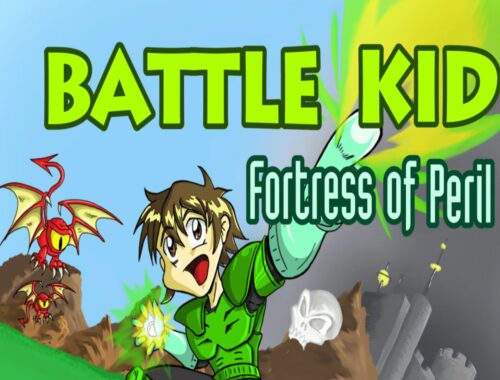Song of Iron Review
Fast Facts
Song of Iron
Developer: Resting Relic
Publisher: Resting Relic
Website: https://www.songofiron.com/
Genre(s): Action, Adventure, Indie
Platform: Xbox (also available on Steam)
Age Rating: PEGI 16
Release Date: 31/8/2021
Price: £15.49
A code was provided for review purposes
Song of Iron comes at the tail-end of gaming’s Viking craze. In recent years we’ve seen the likes of God of War, Assassin’s Creed: Valhalla, and Valheim to name a few. Some of these are still receiving updates and ongoing support. As a lover of all things Norse, I’m delighted to see another game inspired by this influential and fascinating culture. But what makes Song of Iron stand out from its contemporaries is its size, style, and cinematic flair. Oh and the fact it was made by a solo developer.
A Solitary Saga
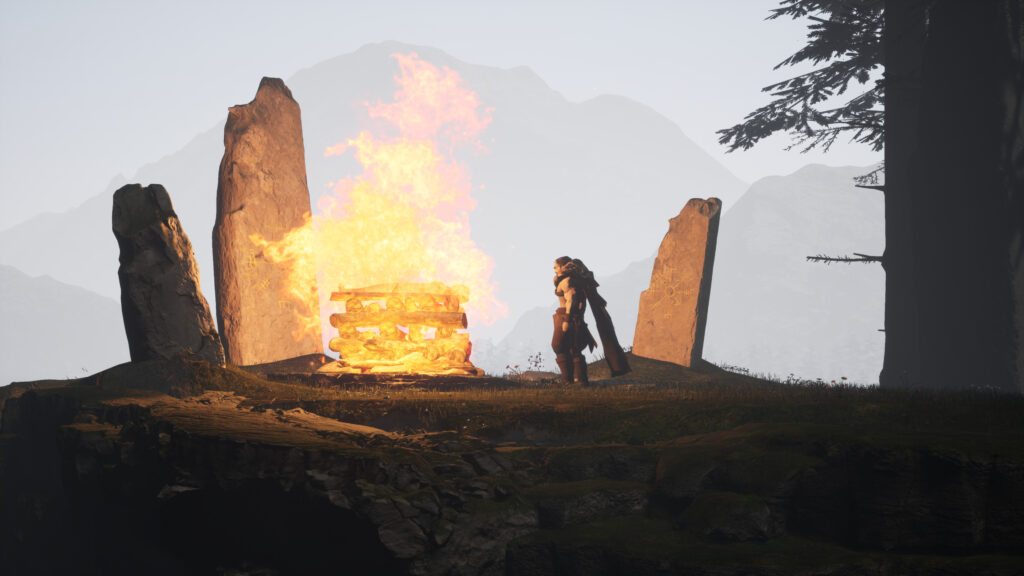
Your saga begins around a burning funeral pyre, where your protagonist recounts a tragic raid on their village. Your loved one is slain during the attack, leaving you with one final request: To go to the home of the gods and call them to save what’s left of your people. After saying one final farewell, you set out on a perilous journey. One that leads you through dark caverns, ruined temples, and windswept mountains.
With such a dramatic opening, you’d think that the game’s narrative would contribute heavily to the overall experience. But, sadly, the narrative itself fizzles out rather quickly, only feeling relevant at the start and end of the game. It wasn’t long before I’d completely forgotten why I was trying to reach wherever I was going. The only thing that really stuck was that I was going somewhere to fulfil a dying wish. There are a few key story moments here and there, but nothing that feels overly significant.
Lacking Strong Character Development
This, to some extent, is the result of the game’s fairly mediocre writing. Characters become nothing more than plot devices thanks to the game’s bare-bones dialogue, used only as a means of advancing the otherwise absent narrative. To make matters worse, most characters with dialogue hold no real value in the story whatsoever. Several “bosses” along the way speak as though the player should have some resentment or slight against them; but in the end, they are no more than just another obstacle in your way; An obstacle no more unique or challenging than the usual cannon fodder outside of their appearance. Even your loved one, whose death is the catalyst for your journey, feels lifeless, and very little is done to make their tragic death meaningful.
But despite its rudimentary writing, Song of Iron somehow still manages to feel incredibly cinematic. While the story might not be much and characters become props, there are some truly exciting and epic moments littered throughout the roughly three-hour-long experience.
A favourite of mine has to be the encounter with the goblin king, your inevitable showdown, and your subsequent escape from his domain. This is but one of the many parts of the game that feels ripped right out of some fantasy blockbuster, proving to be incredibly memorable and exhilarating. It’s a big reason why I really wish the storytelling wasn’t so poor, as there are so many moments that allow Song of Iron’s narrative potential to really shine through the gaps; even if they are razor-thin.
Godly Challenges
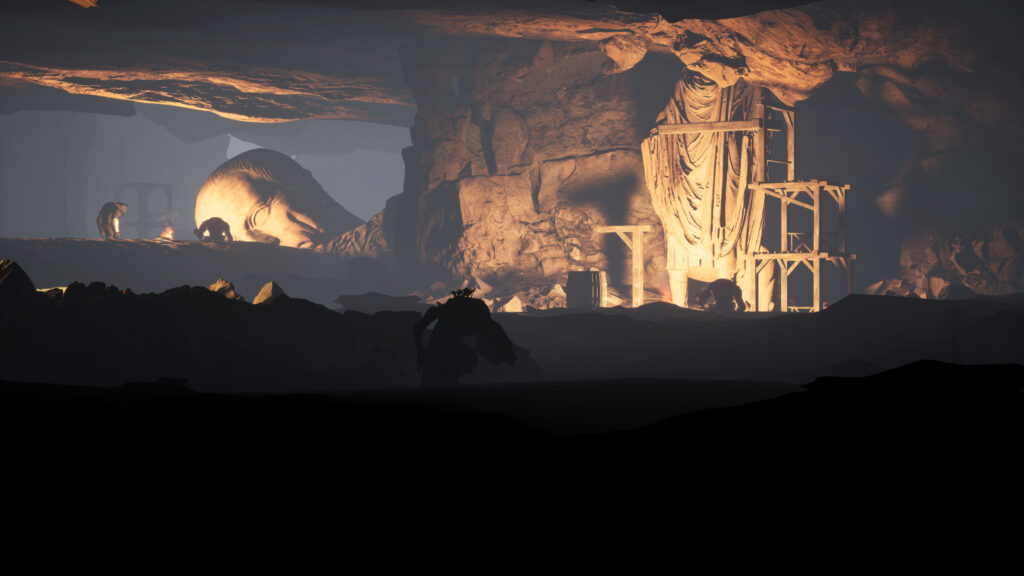
One thing I do love about Song of Iron is the fact it’s a sidescroller. Not just because of how it helps the game stand out in the Viking genre, but because of how much value it adds to the gameplay experience. Firstly, it’s clear that the developer has taken inspiration from other sidescrollers and platformers. Several areas will challenge you to avoid obstacles, sneak past guards, and jump over dangerous gaps. Obstacles often come in the form of large swinging hammers and rolling boulders, forcing you to time a jump or duck at the right moment. Later, you’ll gain access to magical gear that grants you special abilities. Some, like a temporary speed boost and a powerful stomp, become crucial for certain platforming sections where obstacles become more intense. But even combat-oriented powers like flame and lighting weapons can be used to open certain pathways.
Similar to other sidescrollers, going off the main path can yield some interesting discoveries, such as a cheeky little Lord of the Rings reference which is, quite frankly, exceptional. This added a healthy bit of gameplay variety when out of combat and went a long way in holding my attention.
But the other thing that makes Song of Iron’s sidescrolling so good is how pleasant it can be. The game is all about pushing forward even in the face of insurmountable odds. This is characterised by the fact the entire game is pretty much you running from point A to point B, with zero loading screens. It is one seamless journey you embark upon, which offers up several quieter moments and pauses from all the action. It’s a particularly refreshing change of pace when you’re able to just stand and take in the view after another stressful brawl. Speaking of which…
Midgard’s Might
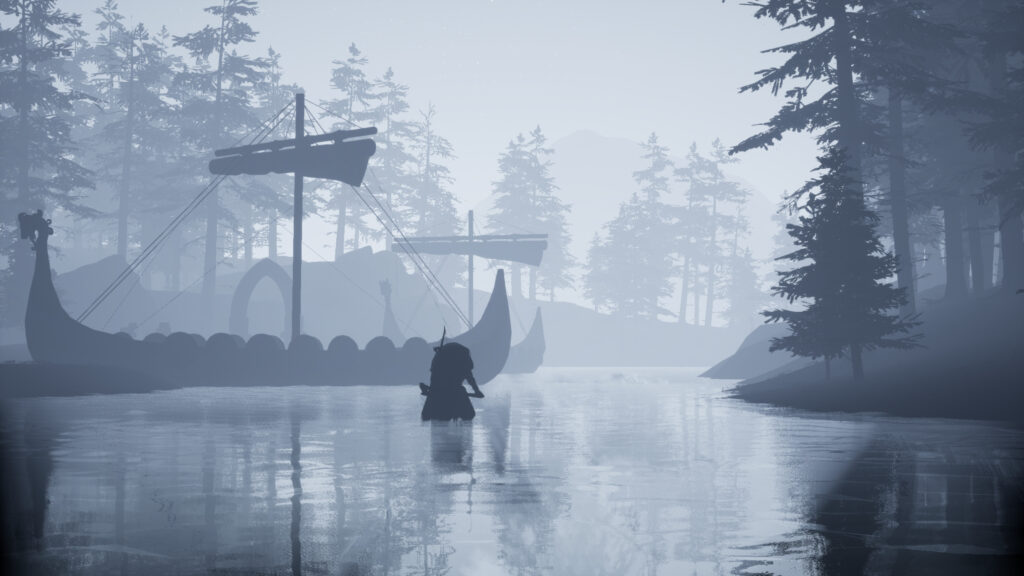
The quality of the game’s writing becomes null and void upon getting into your first brawl. Song of Iron places great emphasis on combat, emulating the thrill and excitement of being a Viking warrior. You’ll be surprised by how well done the combat is. The fights are epic, with many moments no doubt earning you a seat in Odin’s hall. But as a small indie title, don’t expect anything too fancy, like cool combos, counter-attacking, or flashy executions.
That’s not to say the combat is basic. What I loved about Song of Iron’s many brawls was how much freedom I was given to slay my enemies. Despite the lack of combos or counters, you are still able to utilise dashes, rolls and leaping attacks to aid you both offensively and defensively. I found these useful when taking on multiple combatants at once. I could easily back away or roll behind an opponent when I was unable to block.
Going on the offensive is just as varied. Standard light and heavy attacks can be utilised alongside a bow, giving you plenty of ways to kill incoming attackers. You even have the ability to throw any weapon you’re wielding; which feels almost obligatory after gaining the ability to apply lightning to your weapons. This compliments the fact that Song of Iron features a variety of different weapons.
My personal favourite was, of course, the two-handed Viking axe. It not only looks badass but naturally felt more powerful than the sword or hand-axe. You can find these weapons pretty much anywhere, so feel free to go berserk with each. It’s clear the game really wants you to have fun with the extensive toolkit it gives you. Allowing you to fight like your life depends on it, (which it kind of does).
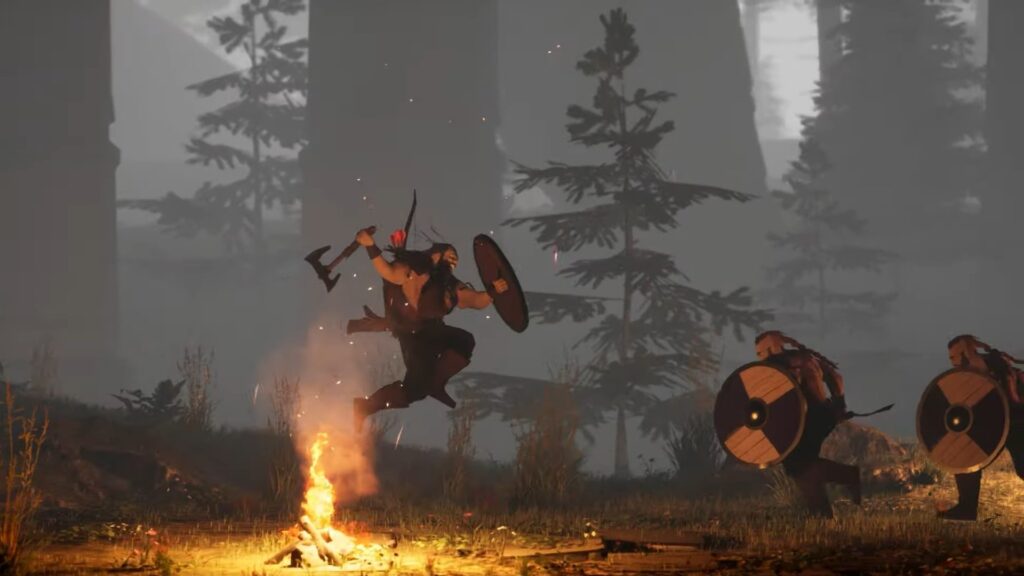
Timing is Everything
Enticing as the combat may be, it still has its issues. It’s great that the game features the amount of combat mechanics it does, but I’d be lying if I said they all felt perfect. While everything is incredibly well animated, attacks felt a little too slow, and transitions between something like an attack and block were non-existent. As such, it can be a little tricky to get used to the combat, as timing becomes an essential part of surviving every battle.
Most times I had to be careful when choosing to attack because I knew that if I did, there was a high chance I’d be struck down first. More often than not, you’ll also be fighting enemies from two different directions, and switching sides is nowhere near as fluid as it needs to be. These two aspects result in a number of fights feeling unfair and hellishly frustrating, where you are not only outnumbered but outmatched.
This does make for an unexpectedly challenging experience. However, it’s hard to tell whether it was even intentional; at least to the extent it’s currently at. Song of Iron‘s collection of battles can immerse you in the Viking fantasy, making you feel like the mighty Thor or brave Baldur. But more often than not, I became more cautious than pugnacious; rolling around and blocking far more than swinging my axe. The game does give you those heroic moments that make you feel like a legendary Norse warrior, but there were still plenty of times I felt more like a monk in a monastery than the guy burning it down.
Asgardian Beauty
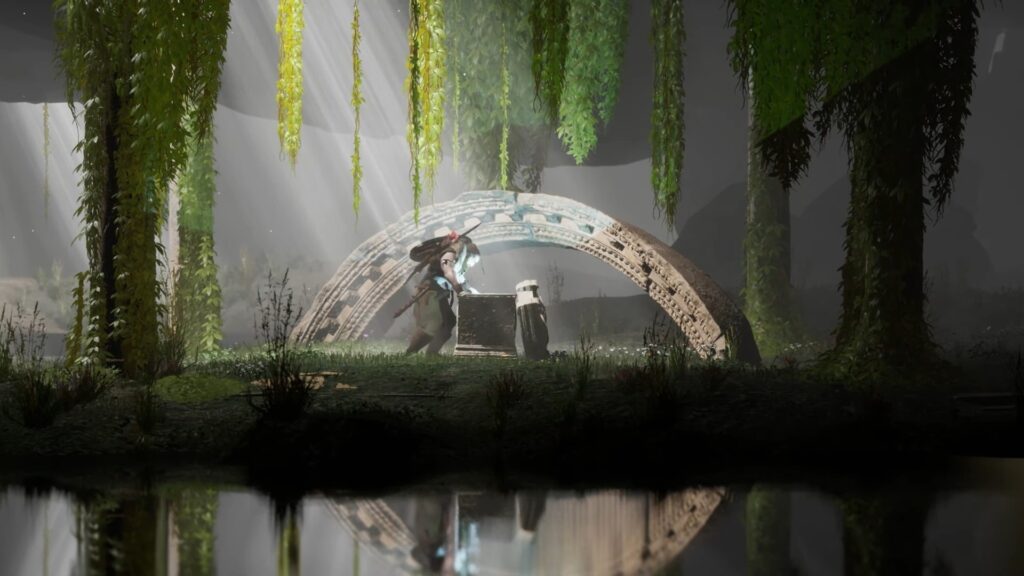
But above all else, Song of Iron stands proudly as a must-play adventure thanks to its stunningly authentic setting and tone. Anyone familiar with the Viking theme will know that there is often a magical beauty to old-Scandinavia. There is always a sense of divinity attributed to the untamed and gorgeous land, and Song of Iron puts it on full display. Distant mountains overlook vast green valleys and glistening fjords; a thick veil of mist rests on the underbrush of dense forests; and dark caverns house long-forgotten tombs and temples, desecrated by vile goblin architecture. No matter what stage of the journey I was on, I found myself blown away by how detailed and utterly captivating its Norse realm was.
The game really knows how gorgeous it is, and it shows. There are many moments where the camera pans out to reveal the true scale and majesty of the background environment; practically begging you to take a screenshot or two. What is also quite remarkable is just how large the world feels. Each environment is comprised of several layers, which grants Song of Iron a grand sense of scale despite taking place on one singular plane. This is a big factor in making the game feel as cinematic as it is, alongside other graphical features like volumetric lighting; which not only adds more atmosphere to those darker areas but really enhances the experience of certain fights.
The Sights and the Sounds of Viking Life
But it is not just the games visuals that make it so impressive. What really drives the authenticity of the game’s setting is its phenomenal soundtrack and sound design. Song of Iron’s music feels as though it has been crafted by the most-esteemed skalds and bards in the nine realms. Battles are fought to the sound of beating drums and deep orchestral hums; the relaxing strums of angelic harps accompany you as you march through flourishing grassland and ascend snowy mountains; and at key moments, the crushing weight of silence is enough to leave you speechless. From its era-appropriate instrumentals to its powerful vocals, Song of Iron delivers one of the greatest soundtracks I’ve ever heard from any game within the Viking genre.
Both the jaw-dropping visuals and enchanting soundtrack work tirelessly to bring to life a land full of mystery, mysticism, and majestic beauty, culminating in an alluring and magnificent journey that had me engaged from start to finish.
Summary
Despite its disappointing storytelling and minor mechanical drawbacks, Song of Iron remains an impeccable achievement for the developer; perfectly capturing what makes the Viking setting so compelling, while also delivering a solid cinematic Norse adventure. It does well to earn a place alongside gaming’s Viking greats as a short but captivating journey chock full of axe-swinging action, excellent world design, and unforgettable soundtrack; Which I hope we’ll see more of in future.
Rapid Reviews Rating

4 out of 5
4
You can purchase Song of Iron from the Xbox store here

You can find and read our reviews on OpenCritic.



